It is hard to imagine that when the rich and famous gathered at Hobcaw House during Prohibition, which lasted from 1920 to 1933, the hosts did not serve plenty of alcohol. Hobcaw House was built in 1929, with this wet bar in the den.
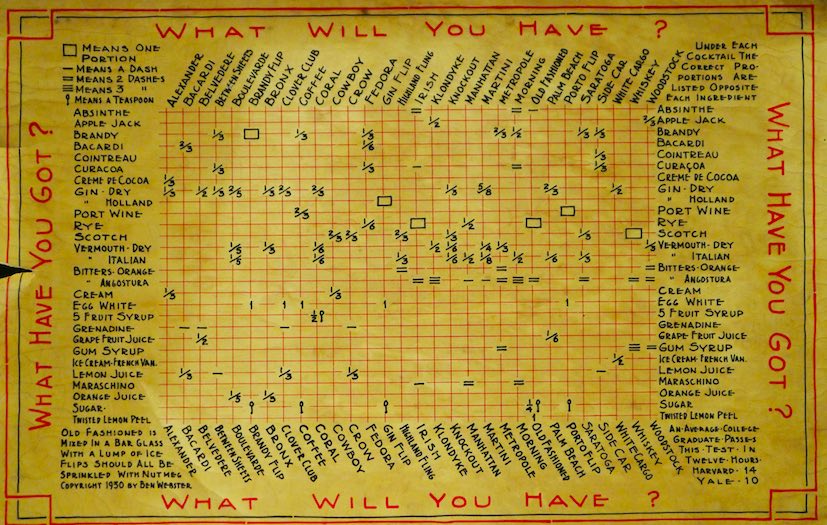
One curious result of Prohibition was that hard liquor became more popular, because its higher concentration of alcohol gave it more of a punch, and it fit into smaller bottles, making it easier to ship, and hide from federal agents. The popularity of mixed drinks also rose, as people combined fruit juice and other beverages with low-quality alcohol. Recipes for fancy cocktails, like those on this drink mixing chart, were widespread.
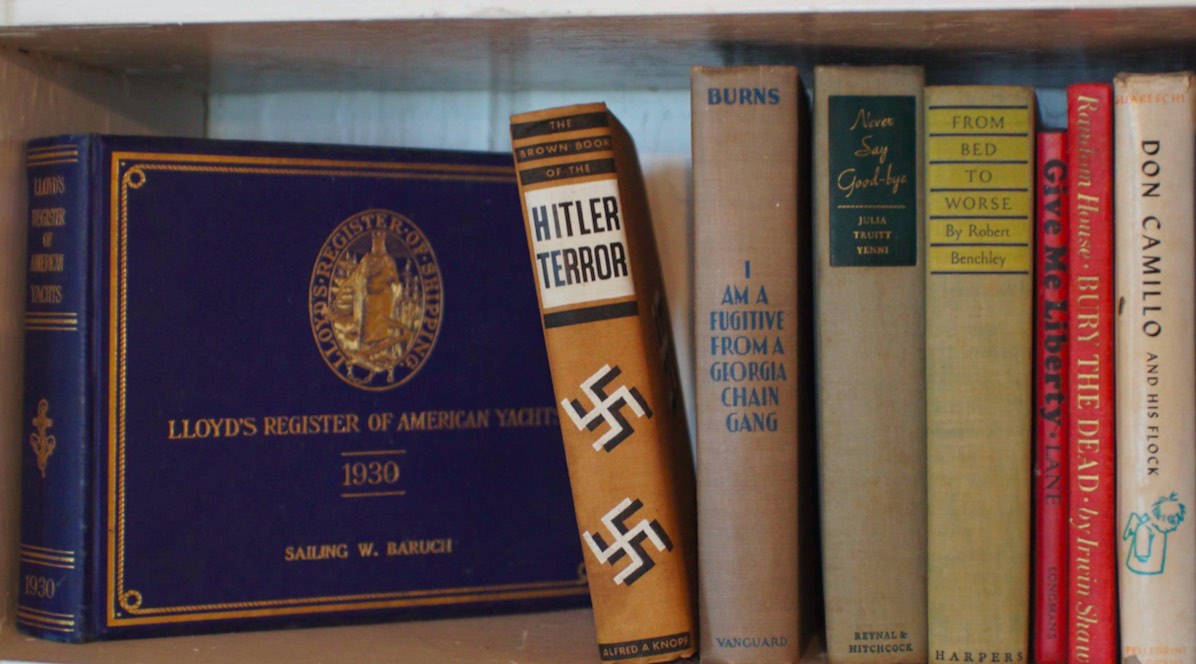
This selection from the bookshelves of the Hobcaw House den reflects some of the Baruch family’s varied interests. The 1930 edition of Lloyd’s Register of American Yachts, with Bernard Baruch’s brother Sailing’s name on the cover, indicates the family’s fascination with boats of all sorts. The Brown Book of the Hitler Terror points to concerns with Fascism and Nazi Germany. Bury the Dead is the first play by American playwright Irwin Shaw. An anti-war drama, it premiered in 1936 in New York to great acclaim.
Never Say Goodbye, by Julia Truitt Yenni, is a small-town Louisiana story told by a young girl. Published in 1937, it might reflect an interest in tales of the South, along with I am a Fugitive from a Georgia Chain Gang. The others, Don Camillo and His Flock by Italian Giovannino Guareschi and Robert Benchley’s From Bed to Worse are two of many books of humor in the Hobcaw House collection.
Belle Baruch turned twenty-one in 1920, and upon her coming of age her father gave her a million dollars, as he did each of his children. High-spirited and very rich – her million would be worth about ten times that today – Belle lived the good life. She established a pied-a-terre in Paris and wore elegant designer clothes by couturier Jean Patou, as in this photograph.
In the early ‘20s she discovered the city of Pau in the French Pyrenees and met famed horseman Paul Larregain, who trained her for show jumping. For years Belle divided her time between New York, Europe and Hobcaw Barony until in 1937, with war looming in Europe, she moved back to the States and began living full-time at Bellefield, the house she had constructed on the Hobcaw property.
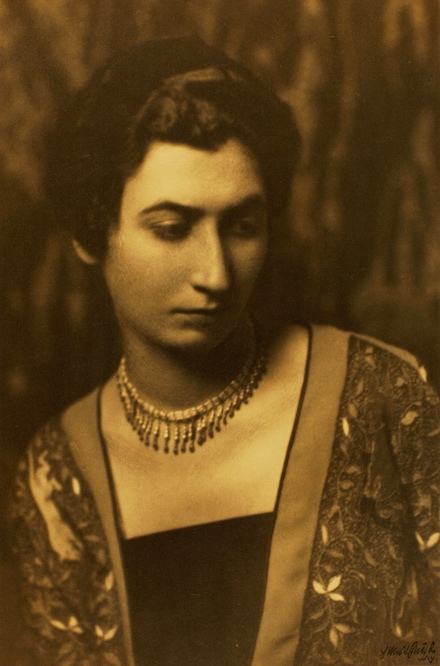
When Bernard Baruch bought Hobcaw Barony from the Donaldsons in 1905, it was the culmination of nearly eight years of searching for a retreat from his hectic life in New York. He was deeply interested in hunting and, by virtue of his Southern roots, familiar with the potential for winter hunting in his home state. His brother, Hartwig, and his Kaminski cousins in Georgetown had hunted on the Donaldson land and told stories of the skies darkened by thousands of ducks, so when Baruch found out Hobcaw was for sale he didn’t hesitate.
For the next four decades the rich and famous joined Bernard and his family on hunting expeditions at Hobcaw Barony. In this film from the Baruch home movie collection, Belle Baruch makes her way through the marshes in search of ducks.
Occupying a prominent place over the den’s fireplace, this portrait of Bernard Baruch depicts him as the image of a Southern sportsman. The landscape behind him appears to be a romanticized version of Hobcaw Barony, with Spanish moss-laden trees lining a sandy path leading to the marsh. A large boulder provides a convenient seat, but it is is a creation of the artist’s imagination, as no such large stones can be found at Hobcaw. At this writing nothing is known about the painter, who signed the portrait R. Alemany.
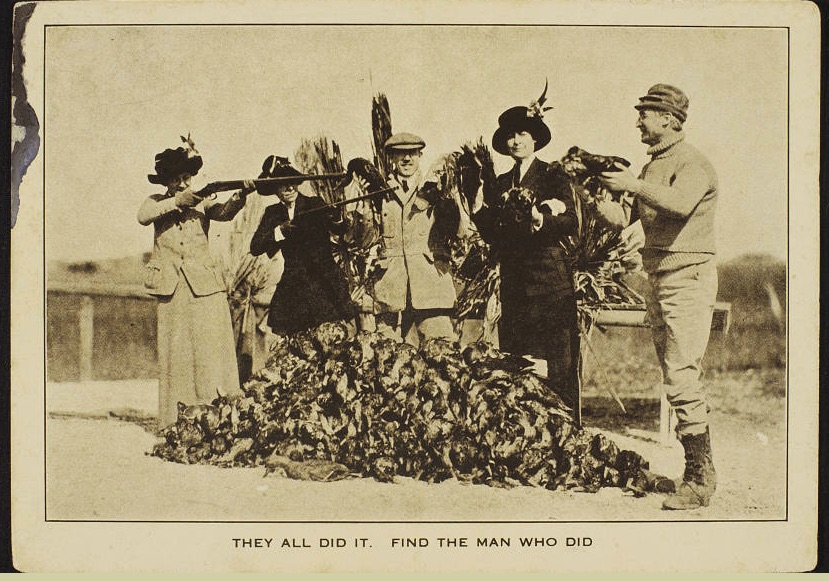
Bernard Baruch was born in South Carolina. His mother came from an old Southern family and his father was a surgeon in the Confederate Army, so in a very real sense he was a Southerner. Yet he was also a New Yorker, educated in New York City public schools and the College of the City of New York, and the Baruch name can be found on buildings all over the city, reflecting his, and his father's, many acts of philanthropy. Both South Carolina and New York claim him. In 2015 a monument honoring Baruch and Larry Doby, another native son, was erected in a public park in their birthplace, Camden, South Carolina.
Bernard Baruch was deeply involved in world events for decades and was often the subject of media coverage. His picture appeared on the cover of Time magazine three times during his life.
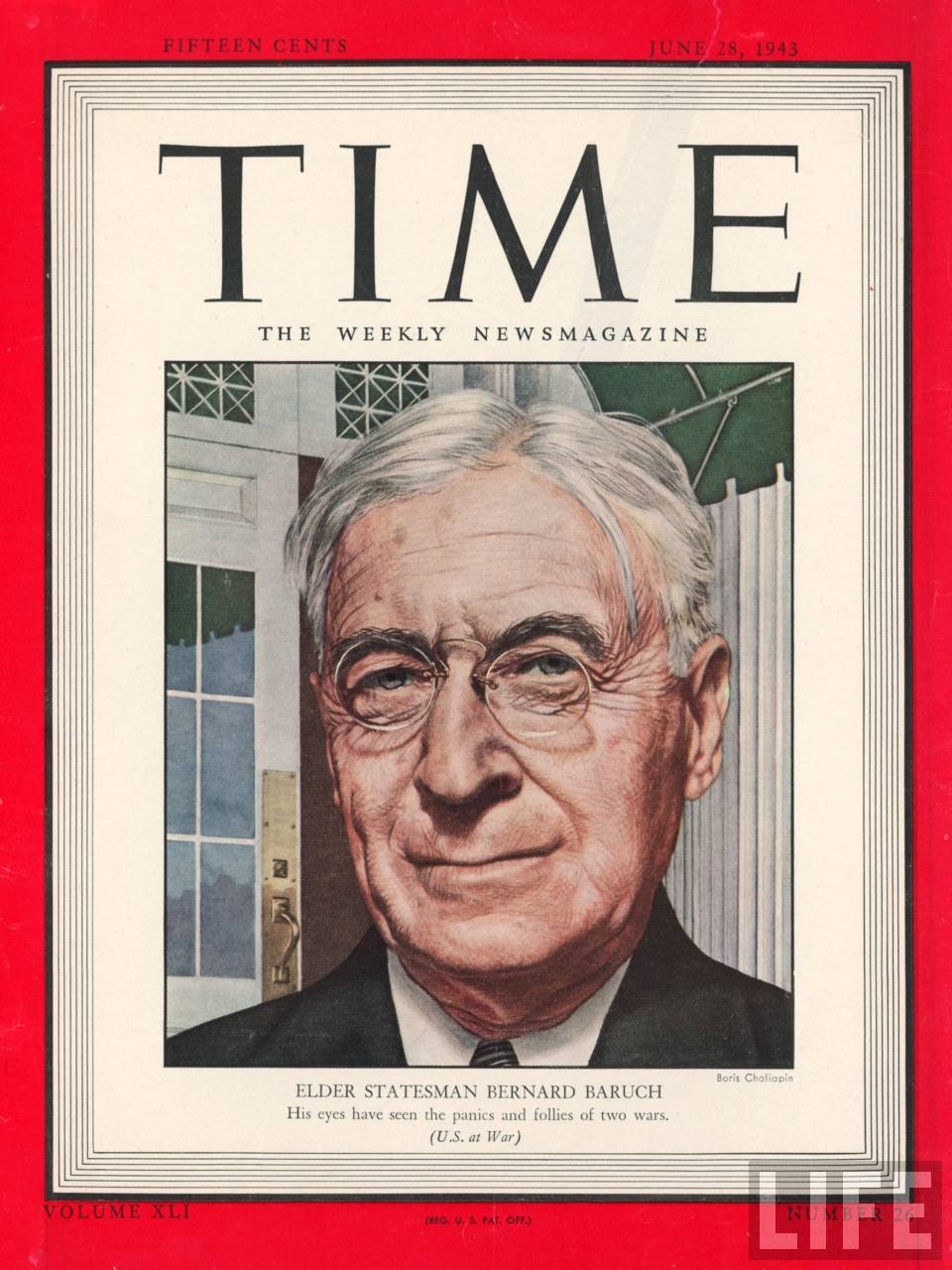
He was profiled in The New Yorker, where he was compared to Rockefeller and Morgan and called "a fascinating study to his fellow man, and an object of eager interest to his fellow women."
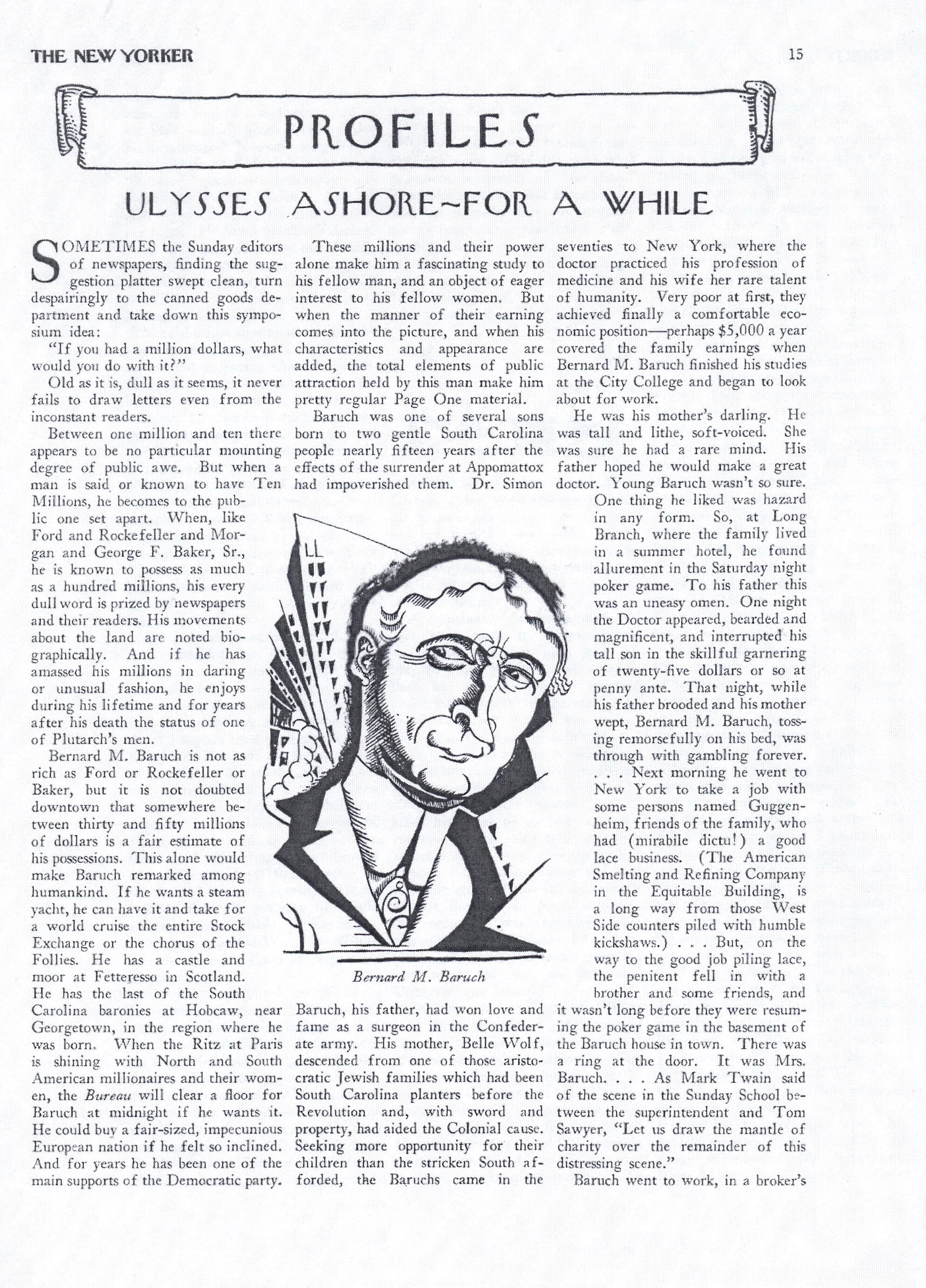
A "Talk of the Town" piece in the October 30, 1948 issue of The New Yorker tells of a second Bernard Baruch, a refugee lawyer, who was "continually getting phone calls, mail, and telegrams meant for Bernard M. Baruch":
"Bernard Baruch was born in Germany and came to this country in 1940. Telephone call are directed to Bernard M. Baruch's office, and letters are sent on there unopened. Four years ago, late at night, the White House called. Last year Henry Kaiser called. A few months ago it was General Eisenhower. Two years ago, on New Year's Day, a messenger came with forty or fifty dollars worth of flowers, with a card from Cardinal Spellman. In the evening the "schnorrers" knock at the door and ask for a few handred dollars."
His influence and ubiquity provided material for numerous political cartoons as well as a comic book, pictured here.
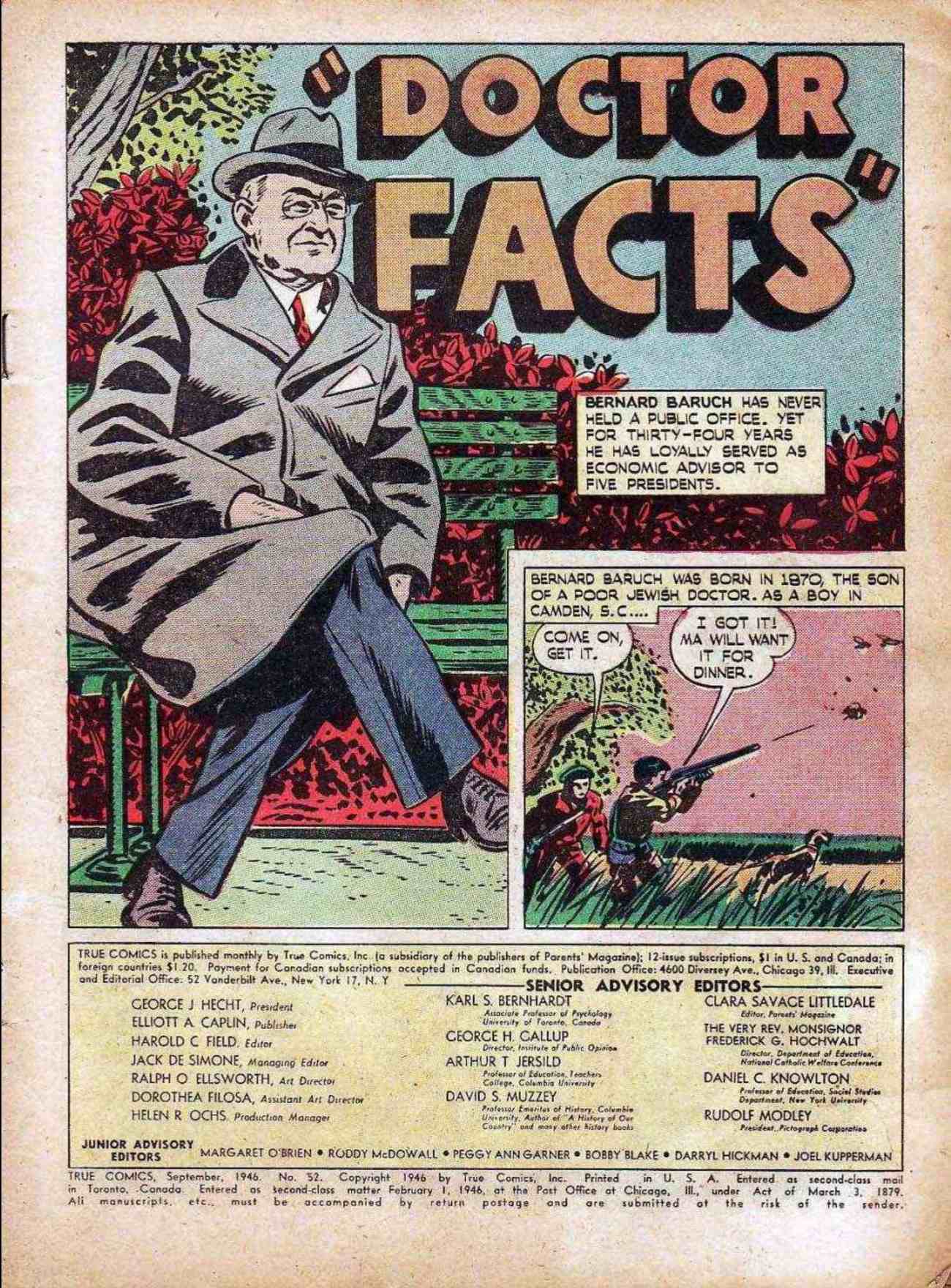
Baruch is the subject of three biographies, the first of which, Mr. Baruch, he commissioned from Pulitzer Prize-winning author Margaret L. Coit.
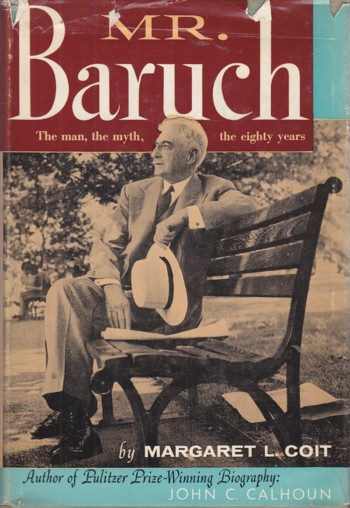
Coit spent more than five years working closely with Baruch on the book. After reading the first draft, he closed his papers to her and denied her permission to quote from any of his writings.
Attorneys for the publisher, Houghton Mifflin, prevailed, and Mr. Baruch was published in 1957 and selected by the Book of the Month Club the following year.
Although Baruch later apologized to Coit, she never wrote another biography of a living person.